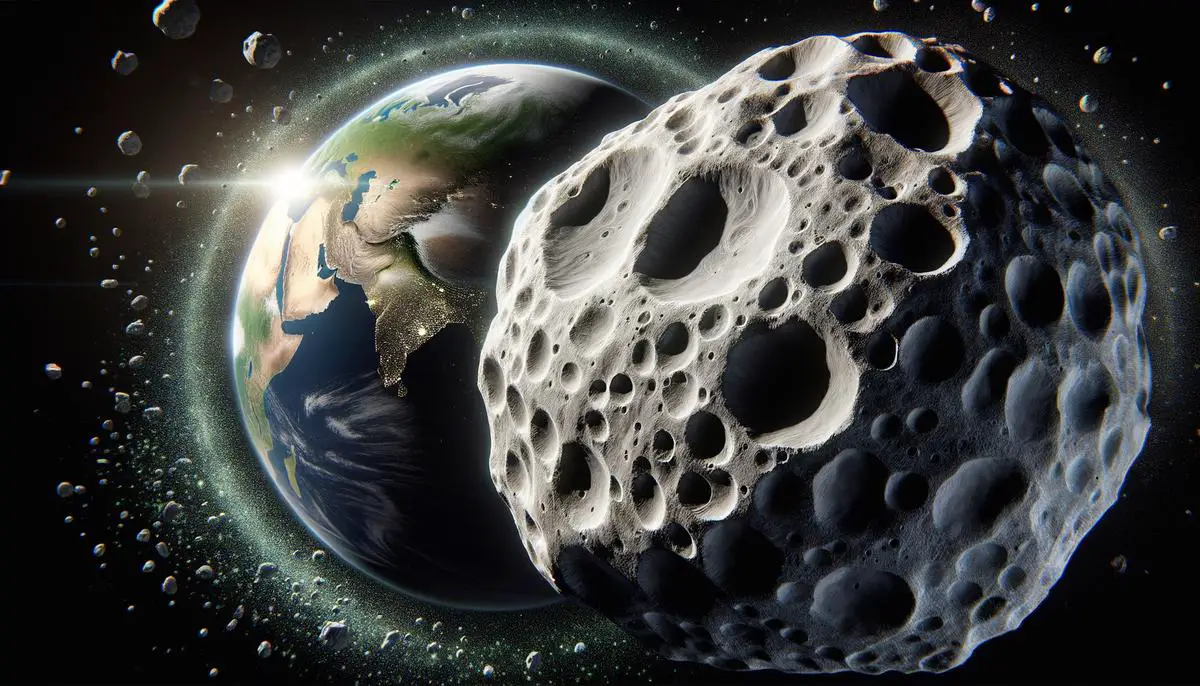Discovery and Initial Impact Probability
Asteroid 99942 Apophis was discovered in 2004 at the Kitt Peak National Observatory. Initial calculations indicated a 2.7% chance of striking Earth in 2029, earning it the highest-ever rating on the Torino Scale for asteroid threats.
This sparked intense scientific interest. Scientists tracked the asteroid, refining its orbit with each observation. Over time, these studies adjusted Apophis's trajectory, confirming Earth's safety in 2029 and 2036. However, a potential 2068 collision scenario lingered until 2021.
Radar observations in 2021 eliminated any impact dates for at least the next century. Apophis was removed from the risk list on March 26, 2021. The asteroid's 2029 approach had shifted from a potential hazard to an exciting scientific opportunity.
On April 13, 2029, Apophis will pass just 32,000 kilometers from Earth—closer than many artificial satellites. This proximity will allow numerous telescopes and spacecraft to study the space rock's surface dynamics, enhancing knowledge crucial for future planetary defense strategies.
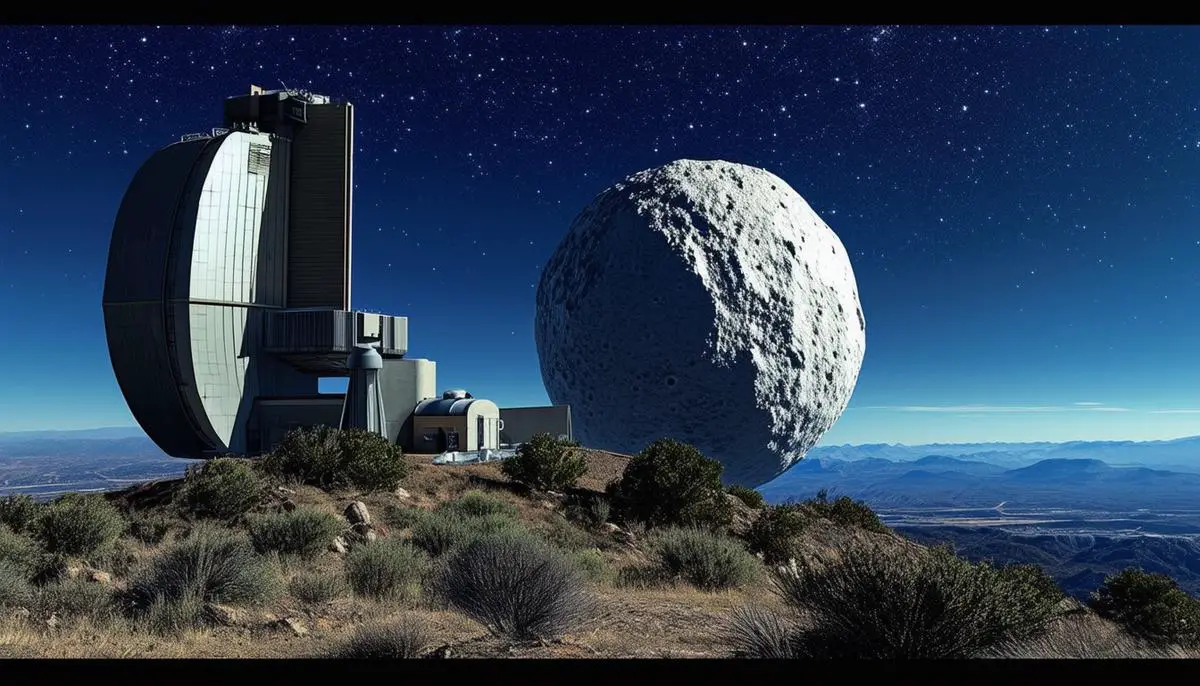
2029 Earth Flyby
On April 13, 2029, Apophis will come within 32,000 kilometers of Earth's surface, closer than many telecommunications satellites. This close passage will subject Apophis to Earth's powerful gravitational forces, resulting in phenomena that will intrigue scientists globally.
For sky-watchers across parts of Europe, Africa, and Asia, the asteroid will be visible without telescopes, briefly becoming a prominent celestial feature.
Expected Effects of the Flyby:
- Significant tidal forces from Earth's gravity
- Potential landslides on the asteroid
- Redistribution of surface material
- Possible alteration of its rotation
These changes provide insights about the asteroid's composition and structural integrity, valuable for future planetary defense planning.
The approach will also affect Apophis's orbit around the Sun, transitioning it from the Aten group of asteroids to the Apollo group. This orbital change will be closely examined by scientists.
Planned Observations and Missions:
- Ground-based radar for high-resolution imaging
- NASA's repurposed OSIRIS-APEX mission
- ESA's proposed RAMSES mission with potential CubeSat deployment
These missions will provide insights critical for planetary defense, serving as a rigorous test for asteroid deflection methods. The 2029 flyby fosters international collaboration among scientists, engineers, and space enthusiasts, offering an unprecedented window into the mysteries of the universe.
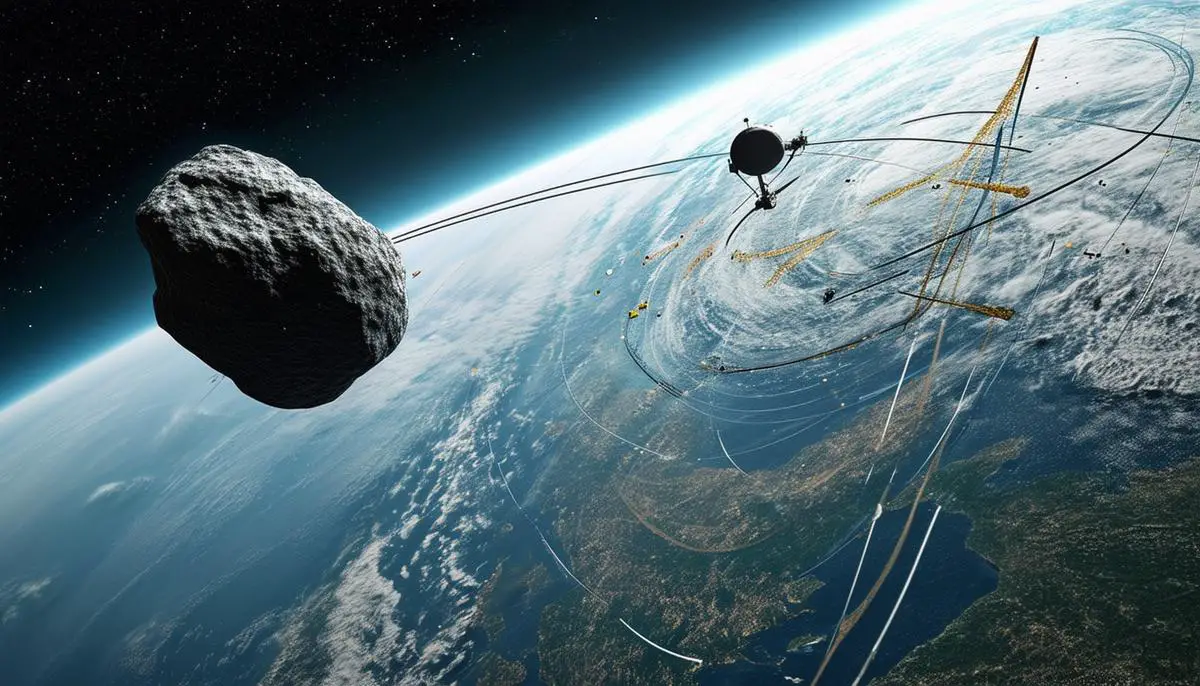
Orbital Changes and Future Trajectory
Earth's gravity will significantly alter Apophis' orbit during the 2029 flyby, acting like a cosmic slingshot. The asteroid will shift from the Aten group to the Apollo group, extending its orbit around the Sun from approximately 0.9 Earth years to a considerably longer period.
This change means Apophis' subsequent visits to Earth's vicinity will be less frequent. While the 2029 flyby will result in strong tidal forces that will reshape Apophis' surface and potentially its rotation, these alterations in trajectory are carefully predicted to pose no risk of impact for at least the next century.
"No known asteroids will collide with Apophis, at least not enough to significantly alter its path towards Earth."
Scientists have analyzed calculations and simulations to map out every possible trajectory of Apophis after 2029. Using precise radar data and simulations involving over a million other solar system objects, researchers have concluded that no known asteroids will collide with Apophis, at least not enough to significantly alter its path towards Earth.
This cosmic event will improve our understanding of gravitational interactions and asteroid behavior. The wealth of data gathered during this remarkable flyby will refine orbital models and help astronomers better predict the paths of potentially hazardous objects in the future.
The elongated orbit after the 2029 flyby provides additional reassurance about the asteroid's future trajectory, reinforcing the understanding that no impact threat exists for at least the next 100 years. This outlook is a testament to the careful work that planetary defense teams worldwide have dedicated to ensuring our planet's safety.
Collision Risk with Other Asteroids
Paul Wiegert and Benjamin Hyatt's comprehensive study offers significant reassurance regarding Apophis' trajectory as it nears its 2029 flyby. They calculated the paths of 1.3 million known asteroids within our solar system to rule out any potential for an asteroid collision that might push Apophis into a more dangerous path toward Earth1.
Their computer simulations revealed that no known asteroids would collide with Apophis before or during its close approach in 2029. This is particularly important because any significant collision could potentially alter its course unpredictably.
Wiegert and Hyatt identified several close encounters that warrant future monitoring. The closest passage identified was with asteroid 4544 Xanthus in December 2026, which will miss Apophis by several hours.
Key Findings:
- No collisions predicted with any known asteroids
- Closest approach: Asteroid 4544 Xanthus (December 2026)
- Continued monitoring essential for future encounters
These findings allow space agencies and researchers to focus their observational campaigns on more immediate concerns. Major space missions like NASA's OSIRIS-APEX and ESA's proposed RAMSES mission can now proceed without the uncertainty of a redirected Apophis, optimizing their scientific payloads and observational plans.
Future monitoring and ongoing vigilance remain essential. Each close approach logged and studied enhances our understanding and helps fine-tune our gravitational models, offering insights into the behavior of potentially hazardous near-Earth objects (NEOs). This persistent research is the foundation of our planetary defense strategy, ensuring that we remain several steps ahead in the cosmic dance around our Sun.
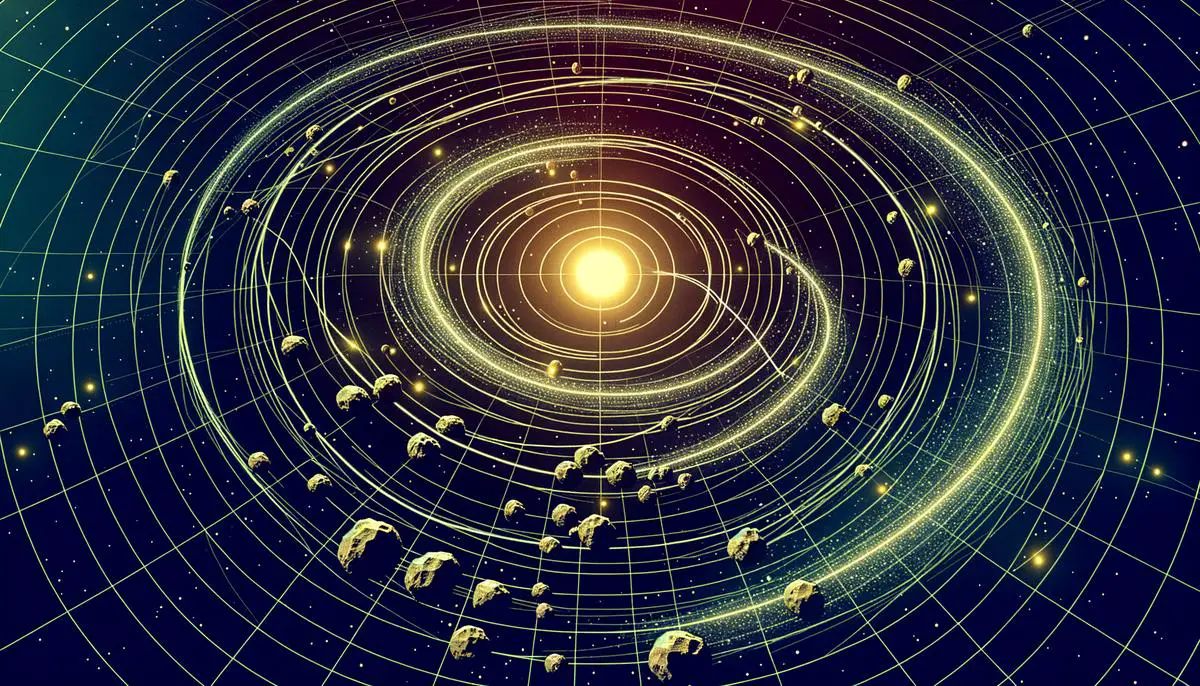
Scientific and Public Outreach Opportunities
The close flyby of Apophis in 2029 presents a significant scientific and public outreach opportunity. NASA, ESA, and other institutions have planned missions and observational campaigns to study this near-Earth asteroid (NEA) at close range, providing insights for planetary defense and asteroid science.
Key missions and initiatives include:
- NASA's OSIRIS-APEX mission: Previously OSIRIS-REx, will redirect to Apophis after its closest approach to Earth. The spacecraft plans to agitate the asteroid's surface, allowing examination of subsurface materials and composition.
- ESA's proposed RAMSES mission: The Rapid Apophis Mission for Space Safety aims to study Apophis before and during its 2029 approach using CubeSats equipped with advanced instruments.
- NEAlight project: Julius-Maximilians-Universität Würzburg is considering several small satellite concepts, including a nanosatellite to accompany Apophis for two months.
- Ground-based efforts: The International Asteroid Warning Network (IAWN) is coordinating observational campaigns to refine knowledge of Apophis's trajectory, physical characteristics, and potential hazards through radar and optical observations.
Public engagement is a key element, with the 2029 flyby visible to the naked eye across parts of Europe, Africa, and Asia. Educational institutions and amateur astronomers are encouraged to participate, creating a broad-based observational campaign.
This coordinated approach to the Apophis flyby demonstrates international collaboration in asteroid research and planetary defense preparedness, while also serving as a unique opportunity for public science education and engagement.
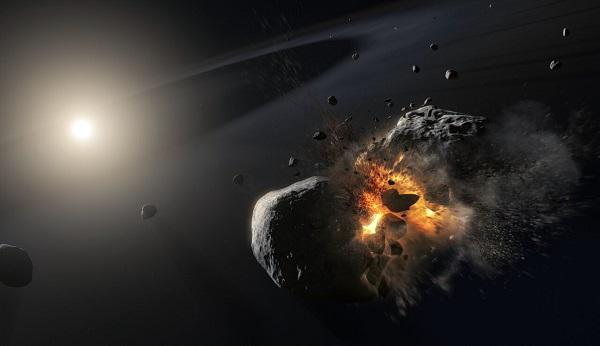
Properties and Composition of Apophis
Discovered in 2004, Apophis is an S-type asteroid with unique physical attributes. It has an irregular, elongated shape with an average diameter of approximately 375 meters, making it one of the largest near-Earth objects to come this close to our planet in recent times1.
Key properties of Apophis include:
- Estimated mass: 20 million tons
- Classification: S-type asteroid (silicate materials with some metallic nickel and iron)
- Origin: Main asteroid belt between Mars and Jupiter, formed about 4.6 billion years ago
- Surface structure: Likely a conglomerate of loose rocks and boulders, resembling a rubble pile
- Rotation: Tumbling retrograde rotator with a wobbling rotation axis
Radar studies reveal that Apophis' surface structure suggests past fragmentation events and indicates potential for surface changes under significant gravitational stresses, such as those expected during its 2029 flyby2.
The asteroid's composition, typical of S-type asteroids, includes minerals like olivine and pyroxene. The presence of metals suggests a differentiated interior in ancient times, with heavier elements concentrated in the core.
"Understanding Apophis' physical properties and composition is crucial for planetary defense strategies and potential future resource utilization missions."
As we approach the 2029 flyby, Apophis continues to offer valuable insights into asteroid dynamics and celestial mechanics, serving as both a subject of scientific inquiry and a benchmark for our planetary defense capabilities.
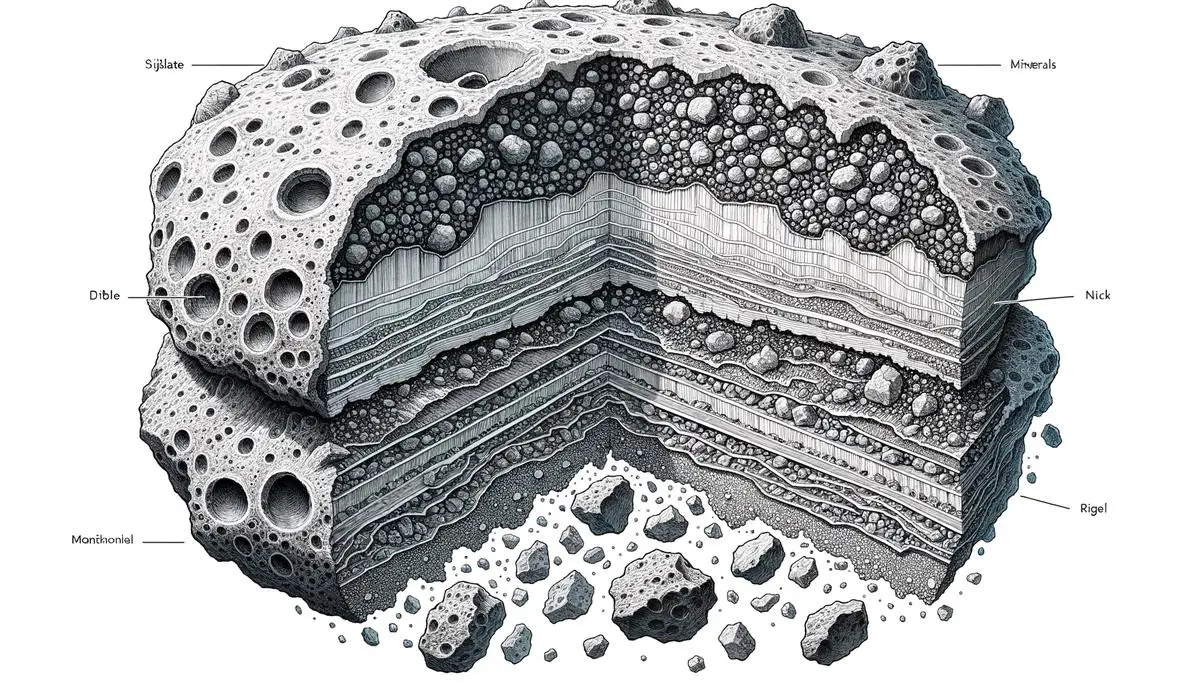
The 2029 Apophis flyby represents a significant opportunity for scientific advancement and international collaboration. This event will enhance our understanding of near-Earth asteroids and strengthen our preparedness for potential future challenges in planetary defense. The coordinated efforts surrounding this close approach demonstrate the scientific community's ability to transform a potentially concerning situation into a valuable learning experience, furthering our knowledge of the cosmos and our place within it.
![]()
